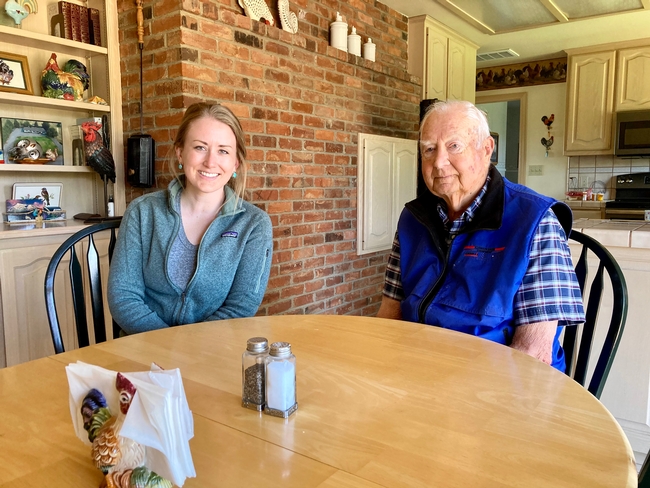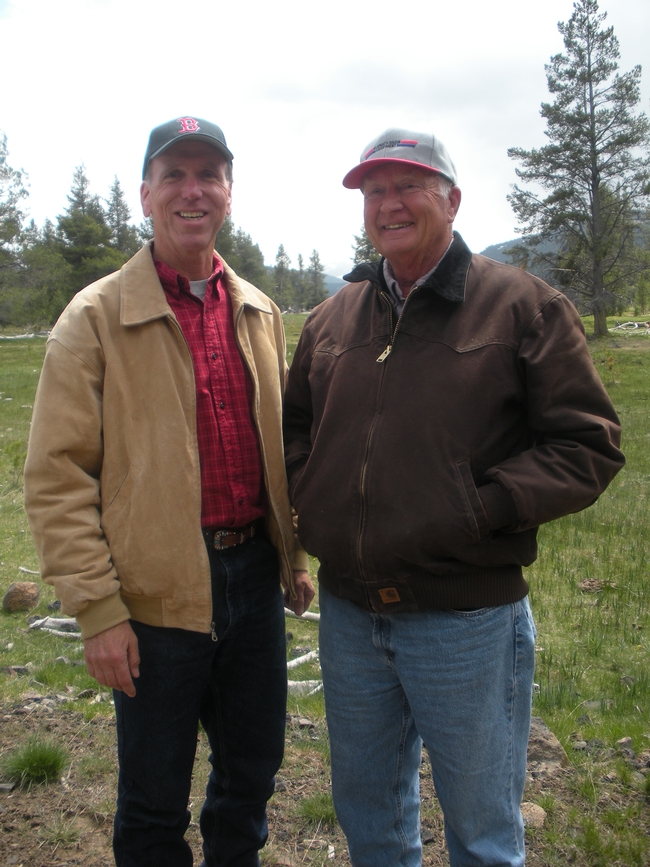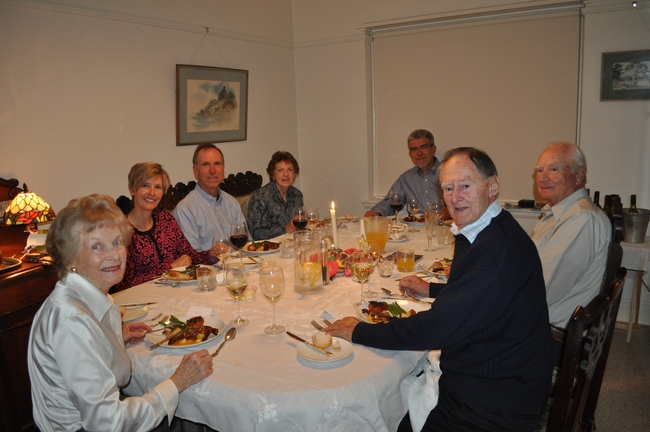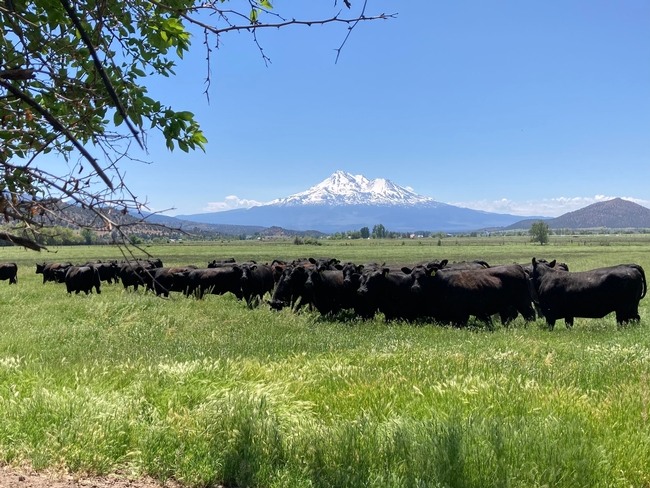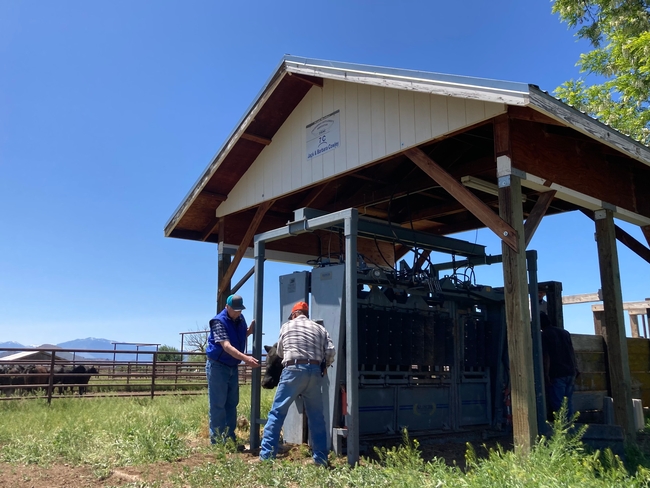
Cattleman’s four decades of UCCE collaborations advance ranching practices
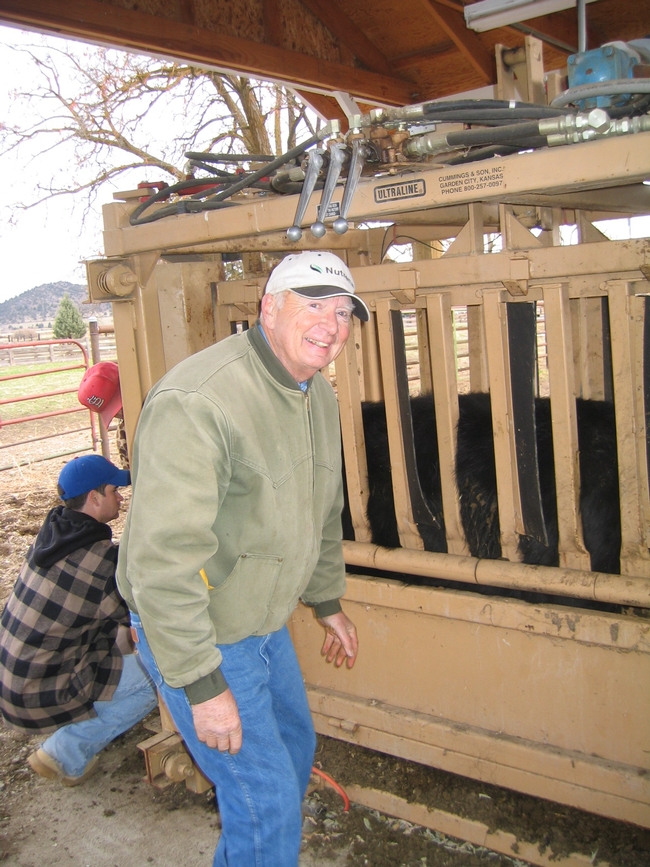 Siskiyou County rancher Jack Cowley has collaborated with UC Cooperative Extension scientists on research projects ranging from weed control to cow genetics for 40 years. The cooperation of farmers and ranchers is critical for producing practical research, scientists say. Photo by Alison Van Eenennaam
Siskiyou County rancher Jack Cowley has collaborated with UC Cooperative Extension scientists on research projects ranging from weed control to cow genetics for 40 years. The cooperation of farmers and ranchers is critical for producing practical research, scientists say. Photo by Alison Van Eenennaam

Eye doctor-turned-rancher brings science background to his second career
Siskiyou County rancher Jack Cowley, 91, joyfully recalled the special Christmas gift that delighted his seven children in the 1960s. Cowley, then a practicing eye doctor in Sacramento, and his late wife Barbara surprised the children with a white quarterhorse, which they named Silver.
“That's how it all started!” exclaimed Cowley, reflecting on the gift horse that would eventually lead to a 40-year collaboration with University of California Agriculture and Natural Resources.
Silver was the impetus for his family's involvement with the 4-H Youth Development Program, a part of UC ANR. Cowley also would later transition to a second career in cattle ranching, and collaborate with UC Cooperative Extension on research projects ranging from weed control to cow genetics.
“Jack has been an extremely committed supporter of UCCE,” said Grace Woodmansee, who became the UCCE livestock and natural resources advisor for Siskiyou County in 2021. “He has worked with UCCE extensively and contributed a lot of time and resources to supporting local and statewide projects.”
Lately Cowley and his son David have been working with Woodmansee and Gabriele Maier, UC Cooperative Extension specialist in the UC Davis School of Veterinary Medicine, on a cow deworming study.
Not only has Cowley allowed UCCE scientists to study his cattle over the years, he has been willing to personally share information with scientists and cattle producers across the country and internationally.
“It is important to foster exchange and linkages, said Dan Drake, UCCE farm advisor emeritus in Siskiyou County, who collaborated with Cowley for 30 years. “He went to so many meetings, especially with the early and uncharted areas of cattle genetics. Jack was on a first-name basis with the leaders from other states and the relationships were important in both directions. Frankly, I think many of those folks were jealous of the great cooperator we had in California.”
Breeding for better beef
After retiring from his Sacramento ophthalmology practice in the 1990s, Cowley settled in Montague in Siskiyou County, 246 miles north of the closest UC campus. There he met then-UC Cooperative Extension farm advisor Steve Orloff and Drake. Orloff advised him on alfalfa production and pasture management while Drake offered counsel on animal health records, organizing breeding, animal nutrition and water issues.
Drake explained to ranchers that by selectively breeding cows based on genetics, they could improve the production and quality of beef so that it's healthier for humans.
“My medical background helped me understand animal genetics,” Cowley said. “We can modify the genetics to improve the quality of the beef to make it more heart-healthy.”
In 2009, Drake introduced Cowley to UC Cooperative Extension specialist Alison Van Eenennaam, who studies animal genetics at UC Davis.
“I was looking to set up a research trial where we would follow cattle from the ranch all the way through to the Harris Ranch processing plant in the Central Valley,” said Van Eenennaam, who worked with Cowley on a three-year project.
Using DNA samples from Cowley's cattle, they evaluated the data they received from processor Harris Ranch of the beef characteristics – such as tenderness -- to compare the different breeds.
“I really thought I knew what I was doing and my cattle graded terribly,” Cowley said.
Since beginning the genetics project, his beef quality steadily improved.
“We're now up to where all of our animals are graded anywhere from 20% to 40% Prime and the rest Choice,” said Cowley, adding that he stopped striving for higher grades because the buyer said there was a limited market for the more expensive meat.
Cowley takes pride in knowing breeding practices developed from the research he and UC Cooperative Extension conducted have been adopted globally by dairy producers and beef producers.
“The type of research we were doing there has eventually evolved to now we have these genomic tests that you can use that genetically predict the performance of animals,” Van Eenennaam said. “Nowadays people just take an ear tag and send it in and get their genetic prediction.”
Van Eenennaam credits Cowley for allowing research on his large herd. “Jack was very patient with things that take a long time. When researchers come onto your ranch, that could slow you down.”
She added, “Genetic improvement, of course, is a huge component of sustainability because the more efficient cattle are, the less feed they consume and the less time they take to finish, which ultimately lessens their environmental footprint.”
Growing up in Utah
Looking back, Cowley marvels that he has been fortunate to do what he wanted to do in life.
“I was interested in ranching when I was probably seven or eight years of age,” said Cowley, who delivered the local Deseret Newspaper on horseback as a boy. “I grew up in Utah, you know, a little town in Utah called Holladay. It was not a ranching community.”
After serving four years in the Air Force during the Korean War, he returned to Utah to find the cute girl he met in first grade had graduated from college and was still single. He married Barbara in 1956. When he was accepted at George Washington University medical school, they drove with their three-week-old baby from Utah to Washington, D.C. He got a job in the Senate office building as an elevator operator working from 5 to 11 p.m., which enabled him to study, meet influential people and finish medical school without debt.
“I actually got to meet Khrushchev,” he said, recalling his encounter with the Soviet leader..
After finishing his ophthalmology residency at UCLA, Cowley established his practice in Sacramento and later taught a few classes at UC Davis Medical School.
Becoming a cattleman
One Saturday afternoon, after Silver the horse joined the family, Cowley and his oldest daughter, Kathryn, were driving in Placerville and saw a ranch for sale. He bought the 90 acres. For two summers, Barbara and the children lived at the ranch and Cowley joined them on weekends.
“Of course, I had to have a few cows to play with,” he said with a chuckle. “Basically, I thought I could make some money off of 50 cows.”
As his herd grew, he moved it to Corning, 50 miles south of Redding, and finally to the site in Montague that could accommodate several hundred head of cattle. “That's when I really became interested in animal genetics,” Cowley said. “That was back when we had slide rules to do our calculations. It was pretty crude, but it was a start.”
In 1990, Cowley was honored as the California Beef Cattle Improvement Association's Seedstock Producer of the year and, in 2007, was named Siskiyou County's Cattleman of the Year. He has served as president of the Siskiyou County Cattlemen's Association, on the Cattlemen's Beef Board, as well as on committees for the National Cattlemen's Beef Association.
“Jack spent countless hours traveling to the Midwest and other beef research institutions to share knowledge, learn more and plan for needed information,” said Drake, emeritus UCCE livestock advisor. This made for better Extension work, better research and recognition of UC Cooperative Extension work nationwide.”
In 2011, when Van Eenennaam and Drake presented their research at an international genomics conference, he joined them in Australia to learn from other researchers. They also visited Australian producers to learn their practices.
“We really rely on cooperators like Jack to enable our research to have translation to farmers and ranchers,” Van Eenennaam said.
In recent years, Cowley has handed the ranch reins over to his children David, Brian, Brent and Kathryn, who live in Siskiyou County.
David, who retired from a nearly 40-year career as a software engineer, plans to continue working with UC Cooperative Extension advisors and specialists.
“Any time you have questions, you can call and they're more than happy to help you,” he said.

